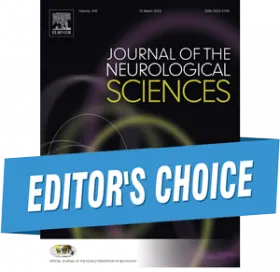
Image: iStockphoto.com/NicoElNino
Invoking AI for diagnosis: Art at the cutting edge of science
Authors: Pulikottil Wilson Vinny
Journal of the Neurological Sciences. REVIEW ARTICLE|VOLUME 453, 120803, OCTOBER 15, 2023
DOI: https://doi.org/10.1016/j.jns.2023.120803
Hazarding a neurological diagnosis has traditionally been an exercise rooted in time tested clinical methods of history taking, careful examination and neurological localization. So sacred are these tenets established by Charcot that, even in present times, a small deviation from the established path is bound to raise eyebrows. Adherence to the sanctity of the process is however no guarantee against diagnostic errors. Art must mix with science in the right proportions to get the diagnosis right. It is indeed a gift that all neurologists earn through experience. Diagnostic accuracy has been shown to vary widely among neurologists.
Deep learning analysis of UPLC-MS/MS-based metabolomics data to predict Alzheimer's disease
Authors: Kesheng Wang, Laurie A. Theeke, Christopher Liao, Nianyang Wang, Yongke Lu, Danqing Xiao, Chun Xu
Journal of the Neurological Sciences. REVIEW ARTICLE|VOLUME 453, 120812, OCTOBER 15, 2023
DOI: https://doi.org/10.1016/j.jns.2023.120812
Highlights
- Performed feature selection using LASSO and identified 21 metabolomic biomarkers.
- The highest accuracy deep learning (DL) model had two layers and 18 neurons.
- Identified metabolites are correlated with clinical CSF biomarkers (Aβ42, tTau, and pTau).
- DL can inform early diagnosis, prognostic risk stratification, and/or early interventions.








